Memories of Fred Rogers at the Heinz of Pittsburgh
Fred McFeely Rogers was born in 1928, 40 miles from Pittsburgh in the town of Latrobe, Pennsylvania. His parents were James Hillis Rogers and Nancy McFeely Rogers. After graduating from high school in Latrobe, Fred went to Dartmouth College. He later transferred to Rollins College in Florida, where he studied music. He planned to attend a Presbyterian seminary after college and become a minister.
A trip home to Latrobe in 1951 changed the course of Fred Rogers’ future. While there he saw television shows geared toward children. He was appalled at the poor quality of these shows. He later said, “I got into television because I hated it so. And I thought, ‘There’s some way of using this fabulous instrument to nurture those who would watch and listen.’”
That same year Rogers graduated from Rollins and went to work at the NBC television network in New York City. In 1952 he married Sara Joanne Byrd, his college sweetheart. In 1953 the Rogers moved to Pittsburgh for Fred to work at WQED, America’s first public television station. For several years, he composed music, played the organ, and worked as a puppeteer on a children’s show. He also attended Pittsburgh Theological Seminary and the University of Pittsburgh’s Graduate School of Child Development. When he was ordained by the United Presbyterian Church in 1963, the church charged him to work with children and families through mass media.
The Rogers family soon moved to Canada for Fred to create a children’s program for Canada’s public broadcasting service. In Canada he worked in front of the camera for the first time. After three years, the Rogers moved home so they could live and rear their sons in Pittsburgh.
In 1968 at age 40, Fred Rogers began the television show Mister Rogers’ Neighborhood® at WQED in Pittsburgh. The show quickly became very popular. Over the next 33 years, Mister Rogers made 895 episodes.
As I wrote yesterday, Pittsburgh’s Senator John Heinz History Center is home to many artifacts from Mister Rogers’ Neighborhood®. As illustrated in the photo below, you can also learn a lot about ketchup at the Heinz!
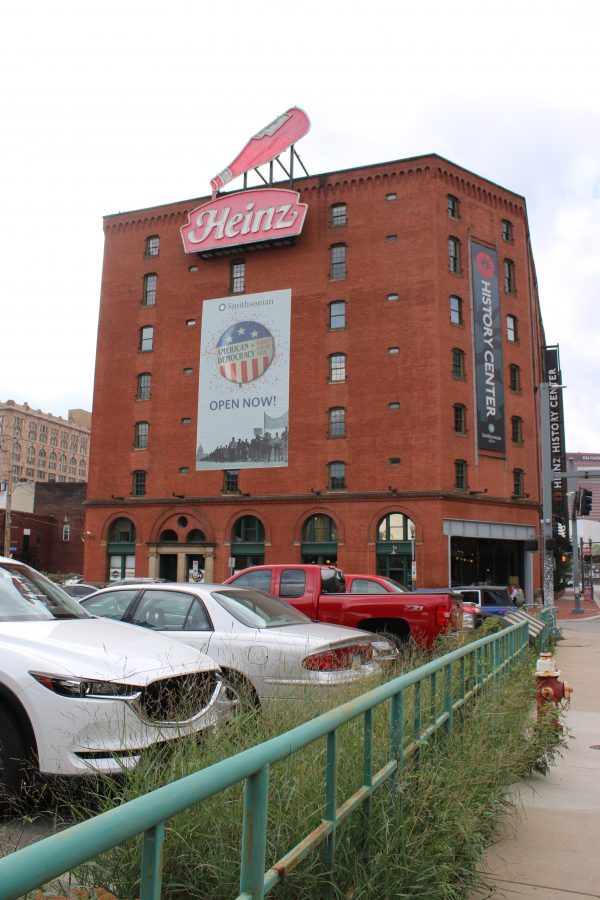
When we arrived there last Thursday morning, this sign greeted visitors at the entrance.
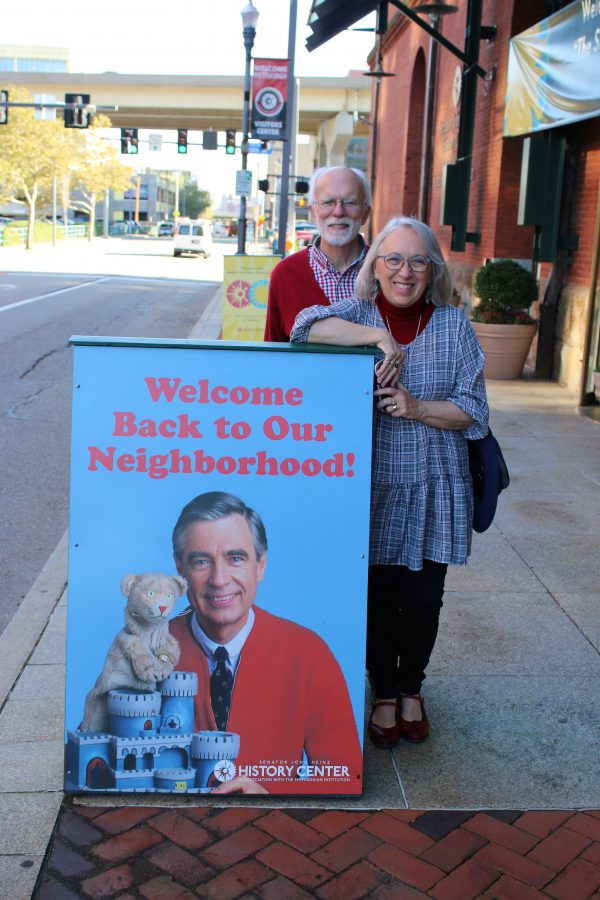
The first Neighborhood item we came to inside the museum was Great Oak Tree. It was home to puppets X the Owl and Henrietta Pussycat in the Neighborhood of Make-Believe.
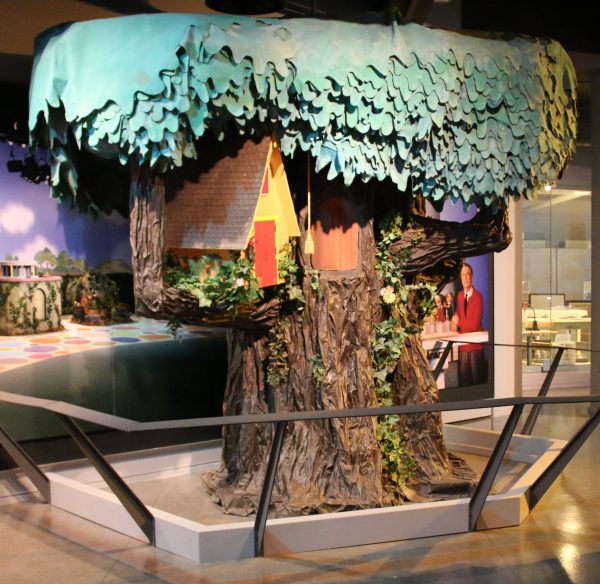
Visitors can’t go behind the tree, but I got as close to the back as I could so I could see where Mr. Rogers stood while performing with the puppets.
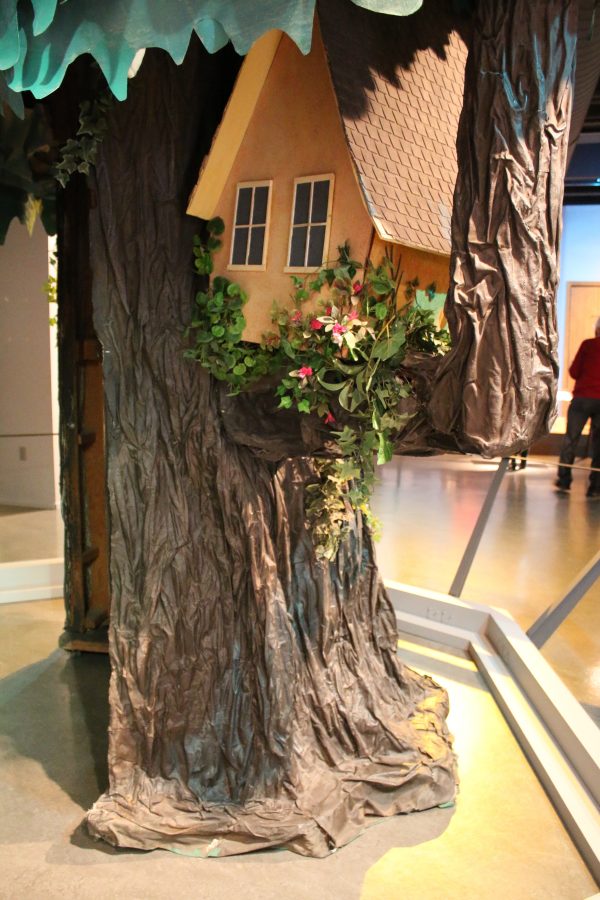
Beyond the tree are the doors, entryway, and windows of the set of Mister Rogers’ living room in what he called his “television house.” A wax figure of Mister Rogers sits on the actual bench where Mister Rogers changed from his street shoes to his tennis shoes at the beginning of each show. The museum has displayed the actual Picture Picture on the wall behind the bench.
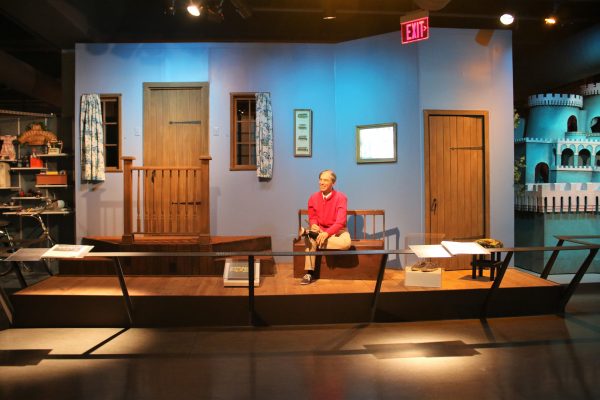
In the display at the Heinz, King Friday XIII’s castle from the Neighborhood of Make-Believe stands to the right of the television house.

King Friday’s telephone was also on display.
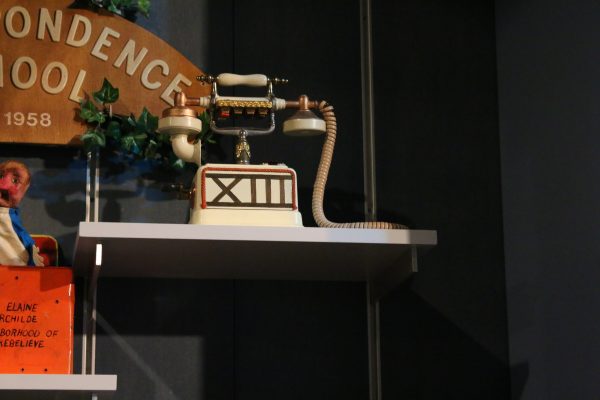
To the right of the castle, we saw Chef Brockett’s baker’s hat. I did not learn whether the apron and stool were authentic but I assume that they are.
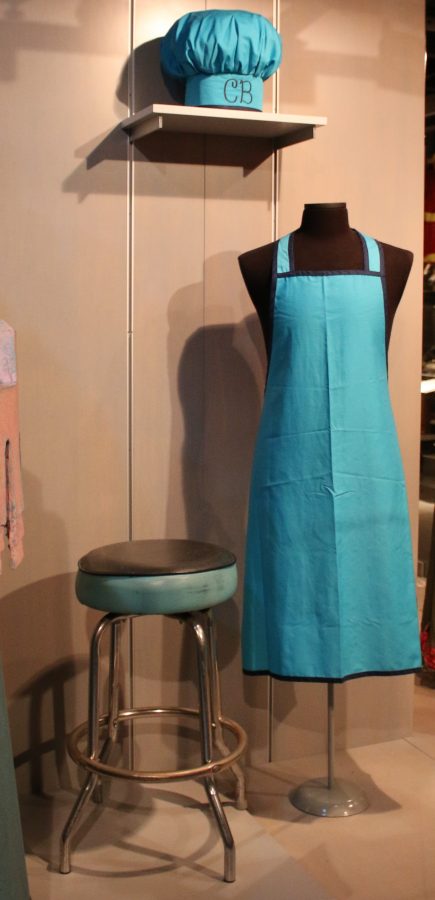
The Heinz has several smaller artifacts from the Neighborhood of Make-Believe. These include Cornflake S. Pecially . . .
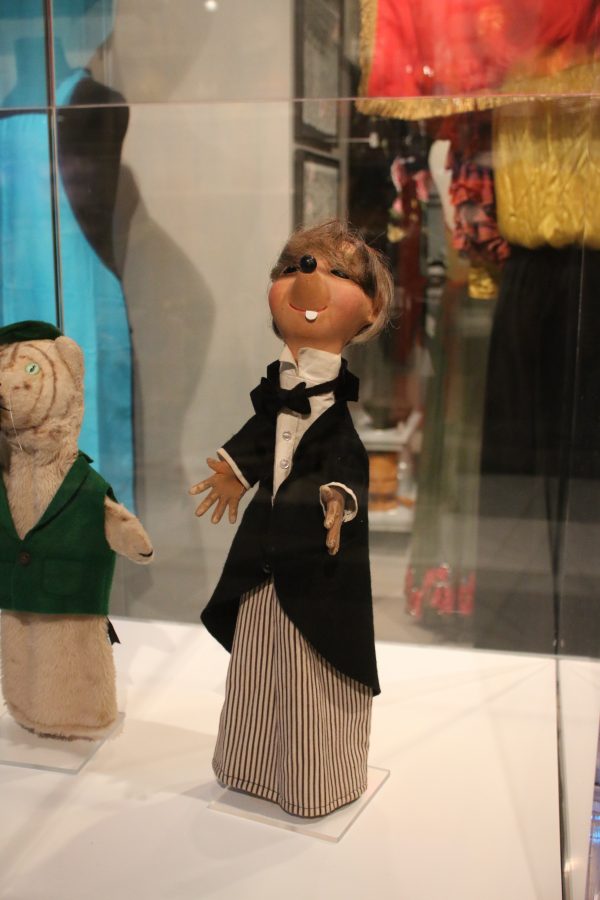
. . . and some of the Rock-Its (rocking chairs) he made in his factory.
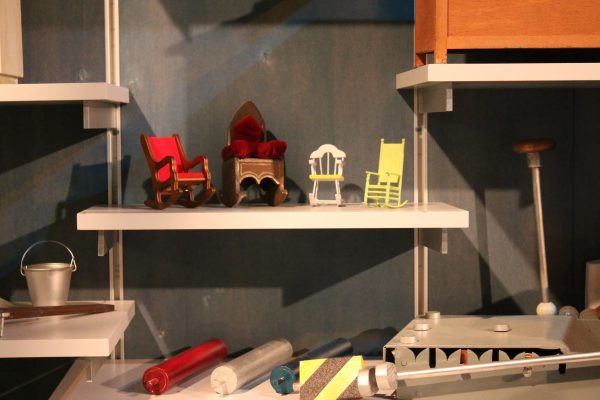
Dr. Duckbill Bagpipe Platypus IV (a.k.a. “Dr. Bill”) and his wife Elsie Jean Platypus make their home at the Heinz, . . .
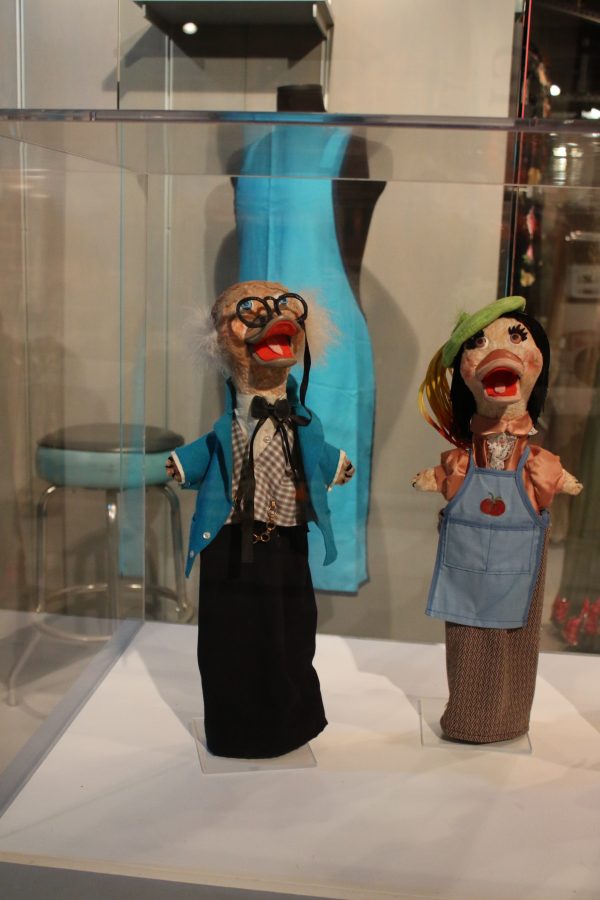
. . . as does Grandpère. Mister Rogers spoke French fluently. Grandpère is French for grandfather.

This is X the Owl’s printing press . . .

. . . and this is the sign for his correspondence school.

Fred Rogers had an aunt named Harriett Elizabeth Rogers. He gave her name to the schoolteacher puppet Harriett Elizabeth Cow. This is her school desk.
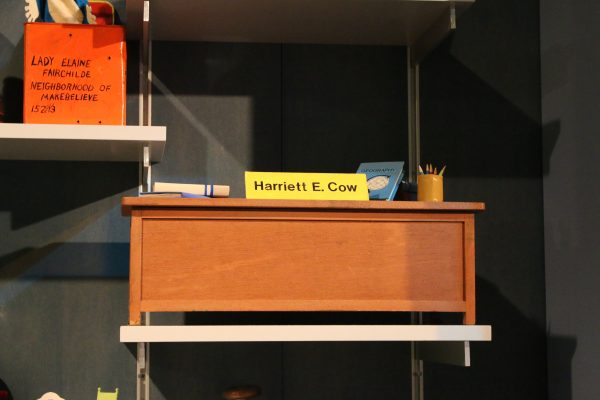
Mister McFeely was one of the most frequently seen residents of Mister Rogers’ Neighborhood. I was especially excited to see the tricycle that Mister McFeely sometimes used to make his speedy deliveries in the neighborhood.
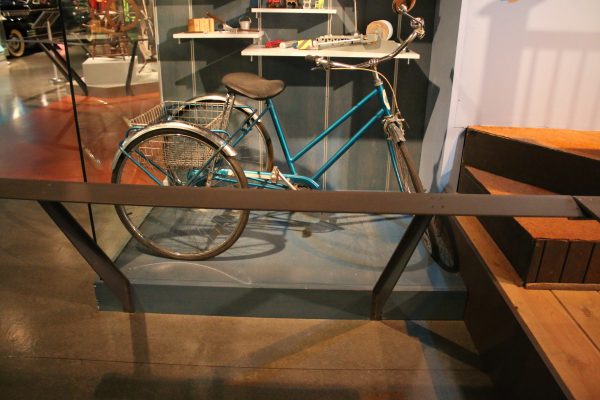
Fred Rogers went to bed each night at 9:30 p.m. He awoke every morning at 5:00 a.m. He read the Bible. He thanked God for people he had known who had since passed away. He prayed for his family and his friends by name. He also prayed for the many, many people who had asked him to pray for them. At 7:30 a.m., he took a swim in a local swimming pool. Before diving in, he quietly sang in Latin a song that a friend had taught him. In English, the words are: “Rejoice in the Lord. Rejoice in the Lord. Alleluia.” When he arrived at the television studio to begin his workday, he prayed, “Dear God, let some word that is heard be Yours.”
In 1992 Rogers led a public prayer at the commencement of Boston University. The cheering students were so excited about seeing their old childhood television friend that he had to calm them down so they could pray. He asked them to sing with him “It’s a Beautiful Day in the Neighborhood,” a song that these television friends knew by heart.
Rejoice in the Lord always;
again I will say, rejoice!
Philippians 4:4
Love does no wrong to a neighbor;
therefore love is the fulfillment of the Law.
Romans 13:10



Charlene, thank you for this fascinating and encouraging post about Mr. Rogers. I did not know he got into television because he hated it and wanted to provide something more nurturing for children. His story is inspiring.